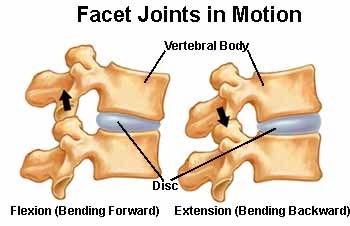If you have neck pain caused by whiplash, you may want to visit a chiropractor who can provide many nonsurgical treatment options for relief.
Written by Stewart G. Eidelson, MD
Whiplash is an injury to the neck muscles from rapid forward and backward motion of the neck caused by a trauma (eg, a car accident). It can cause acute (short-term) neck pain as well as restricted movement in your neck.
How Does a Chiropractor Diagnose a Whiplash Injury?
The chiropractor evaluates your spine as a whole—even if you go to the chiropractor complaining of neck pain following a trauma. He or she will examine the entire spine because other regions of the spine may be affected (not just your neck).
The chiropractor identifies any areas of restricted joint motion, intervertebral disc injury, muscle spasm, and ligament injury. He or she may use a technique called motion and static palpation—diagnostic techniques that involve touch. Your chiropractor will also feel for tenderness, tightness, and how well your spinal joints move.
He or she will also analyze how you walk, and take note of your posture and spinal alignment. These details will help the chiropractor understand your body’s mechanics and how your spine works, helping with the diagnosis process.
In addition to the chiropractor’s evaluation of your spine, he or she may order an x-ray or an MRI of your spine to evaluate any degenerative changes that may have existed before your whiplash injury. The diagnostic images and results of your physical and neurological evaluation are compared to develop the best treatment plan.
Stages of Whiplash Treatment
Soon after whiplash occurs—in the acute phase—the chiropractor will work on reducing neck inflammation using various therapy modalities (eg, ultrasound). He or she may also use gentle stretching and manual therapy techniques (eg, muscle energy therapy, a type of stretching).
The chiropractor may also recommend you apply an ice pack on your neck and/or a light neck support to use for a short period of time. As your neck becomes less inflamed and the pain decreases, your chiropractor will perform gentle spinal manipulation or other techniques to restore normal motion to the your neck’s spinal joints.
Chiropractic Treatments for Whiplash
Your treatment plan depends on the severity of your whiplash injury. The most common chiropractic technique is spinal manipulation. Some spinal manipulation techniques commonly used are:
- flexion-distraction technique: This hands-on technique is a gentle, non-thrusting type of spinal manipulation to help treat herniated discs with or without arm pain. Your whiplash injury may have aggravated a bulging or herniated disc. The chiropractor uses a slow pumping action on the disc instead of direct force to the spine.
- instrument-assisted manipulation:This technique is another non-thrusting technique chiropractors often use. Using a specialized hand-held instrument, the chiropractor applies force without thrusting into the spine. This type of manipulation is useful for older patients who have a degenerative joint syndrome.
- specific spinal manipulation: The chiropractor identifies spinal joints that are restricted or show abnormal motion (called subluxations). Using this technique, he or she will help restore motion to the joint with a gentle thrusting technique. This gentle thrusting stretches soft tissue and stimulates the nervous system to restore normal motion to the spine.
In addition to spinal manipulation, the chiropractor may also use manual therapy to treat injured soft tissues (eg, ligaments and muscles). Some examples of manual therapies your chiropractor may use are:
- instrument-assisted soft tissue therapy: Your chiropractor may use the Graston technique, which is an instrument-assisted technique used to treat injured soft tissues. He or she will perform gentle repeated strokes using the instrument over the injured area.
- manual joint stretching and resistance techniques: An example of a manual joint therapy is muscle energy therapy.
- therapeutic massage:The chiropractor may perform therapeutic massage to ease muscle tension in your neck.
- trigger point therapy:Your chiropractor will identify specific hypertonic (tight), painful points of a muscle by putting direct pressure (using his or her fingers) on these specific points to alleviate muscle tension.
Your chiropractor may also use other therapies to help reduce neck inflammation caused by whiplash. Examples of other therapies your chiropractor may use are:
- interferential electrical stimulation: This technique uses a low frequency electrical current to help stimulate muscles, which can ultimately reduce inflammation.
- ultrasound: By increasing blood circulation, ultrasound can help decrease muscle spasms, stiffness, and pain in your neck. Ultrasound does this by sending sound waves deep into muscle tissues. This creates a gentle heat that increases circulation.
How Does a Chiropractor Help Treat Whiplash?
Chiropractors look at the whole person—not just the painful problem. They view neck pain as unique to each patient, so they don’t just focus on your neck pain. They emphasize prevention as the key to long-term health. In addition to these treatments, your chiropractor may also prescribe therapeutic exercises to help restore normal motion in your spine and reduce whiplash symptoms.
Using these chiropractic techniques, a chiropractor will help you increase your daily activities. He or she will work hard to address any mechanical (how the spine moves) or neurological (nerve-related) causes of your whiplash.

